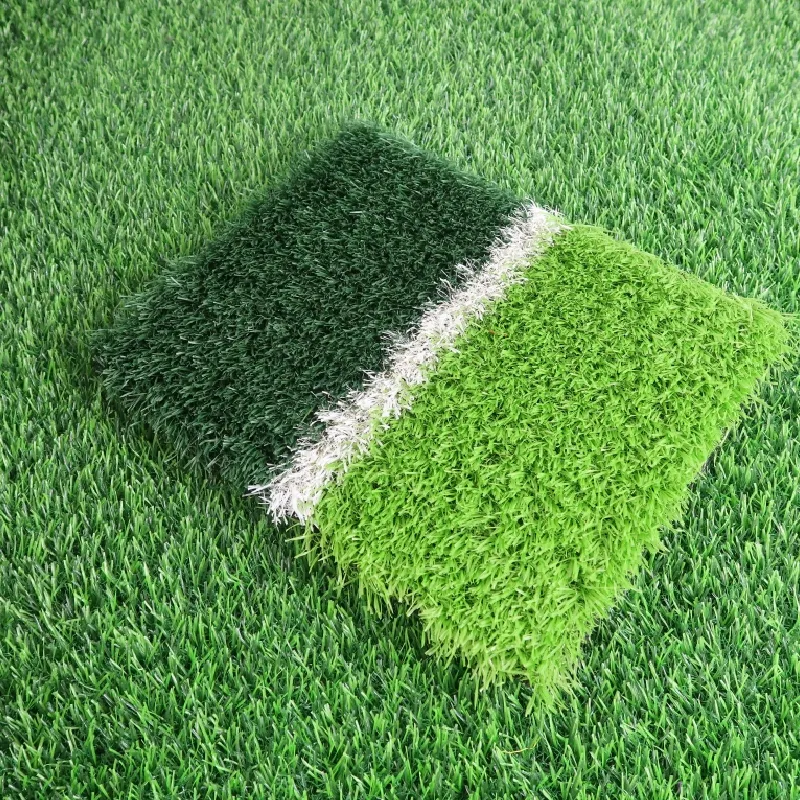
- Afrikaans
- Arabic
- Belarusian
- Bengali
- Czech
- Danish
- Dutch
- English
- Esperanto
- Estonian
- Finnish
- French
- German
- Greek
- Hindi
- Hungarian
- Icelandic
- Indonesian
- irish
- Italian
- Japanese
- kazakh
- Rwandese
- Korean
- Kyrgyz
- Lao
- Latin
- Latvian
- Malay
- Mongolian
- Myanmar
- Norwegian
- Persian
- Polish
- Portuguese
- Romanian
- Russian
- Serbian
- Spanish
- Swedish
- Tagalog
- Tajik
- Thai
- Turkish
- Turkmen
- Ukrainian
- Urdu
- Uighur
- Uzbek
- Vietnamese
football synthetic turf
Dec . 16, 2024 21:18 Back to list
The Rise of Synthetic Turf in Football
In recent years, the landscape of football has been transformed by the introduction and growing acceptance of synthetic turf. This innovative playing surface has garnered attention for its potential to enhance game quality, reduce maintenance costs, and provide a consistent playing experience regardless of weather conditions. As football continues to evolve, it is vital to examine the various aspects of synthetic turf, including its benefits, challenges, and future prospects.
Enhanced Performance and Playability
One of the most significant advantages of synthetic turf is its ability to deliver a consistent playing surface. Unlike natural grass, which can become uneven due to wear and tear, weather conditions, and soil quality, synthetic turf remains stable across various climates. This consistency allows for more predictable ball behavior, enabling players to perform at their best. The surface can be engineered to suit specific sports requirements, offering optimal traction and shock absorption, which can enhance player safety and performance.
Moreover, synthetic turf can withstand higher usage rates than natural grass, making it ideal for facilities that host multiple games and training sessions. With the resilience to endure a more rigorous schedule, synthetic fields promote greater community engagement in sports, as more players have access to well-maintained facilities.
Cost-Effectiveness and Maintenance
Another significant benefit of synthetic turf is the cost savings associated with its maintenance. Natural grass fields require regular upkeep, including mowing, watering, fertilizing, and pest control, all of which can be labor-intensive and costly. In contrast, synthetic turf requires minimal maintenance after installation. While the initial investment in synthetic grass can be higher, the long-term savings often outweigh these costs.
Organizations can allocate the funds previously directed towards maintenance and repair of natural grass fields to other critical areas, such as youth development programs or facility enhancements. Additionally, synthetic turf can be played on shortly after heavy rain, eliminating downtime and enhancing the overall usage rate of football facilities.
Environmental Considerations
football synthetic turf

While synthetic turf presents numerous benefits, it is not without its controversies, especially concerning environmental impact. Critics point out that the materials used in synthetic grass, often made from polyethylene and other plastics, contribute to pollution and waste. The production of synthetic turf also requires energy and resources, raising concerns about sustainability.
However, manufacturers are increasingly exploring eco-friendly alternatives and innovations. Some synthetic turfs are now made from recycled materials, and there are ongoing efforts to develop biodegradable options. Furthermore, synthetic fields can contribute to water conservation, as they require significantly less water for upkeep compared to traditional grass fields.
Addressing Health Concerns
Health concerns have also emerged regarding synthetic turf, particularly those related to player safety. The initial versions of synthetic turf raised alarms due to the materials used and the potential for injuries due to increased friction during play. However, advancements in technology have led to the design of softer, more forgiving surfaces that provide better shock absorption.
Moreover, studies have been conducted to evaluate the risks associated with synthetic turf, including potential exposure to harmful chemicals. Regulatory bodies and sports organizations are actively addressing these concerns by establishing safety standards and guidelines for the production and installation of synthetic turf.
Conclusion The Future of Football Fields
As football continues to grow worldwide, the role of synthetic turf in shaping the future of the sport is undeniable. Its benefits in terms of performance, cost-effectiveness, and usability are compelling attributes that have led to its widespread adoption. However, it is essential to balance these advantages with ongoing considerations about environmental impact and player safety.
In the coming years, we may see further innovations in synthetic turf technology, leading to greener, safer, and more sustainable options. As football federations and clubs commit to improving their facilities and ensuring equitable access to all players, synthetic turf is likely to remain a vital component of the football landscape, paving the way for a new era in this beloved sport.
-
The Benefits of Artificial Turf for Indoors
NewsJul.15,2025
-
How Artificial Grass Suppliers Ensure Quality Products
NewsJul.15,2025
-
Artificial Grass and Pets: A Space for Relaxation
NewsJul.08,2025
-
Balcony & Outdoor Decoration with Artificial Grass
NewsJul.08,2025
-
Best Indoor Artificial Grass for Home
NewsJul.07,2025
-
Best Pet Turf for Dogs: Safe & Durable Artificial Grass Options
NewsJul.07,2025
Products categories









